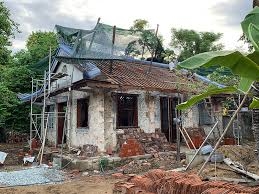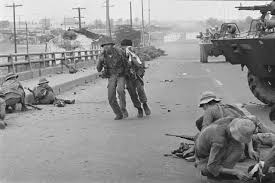Kinh Đời
NGHĨ LẠI VỀ CHIẾN TRANH (THINK AGAIN: WAR) By Joshua S. Goldstein

Foreign Policy
August 15, 2011
Thế giới ngày nay không bạo lực hơn trước, nhưng chiến tranh khắc nghiệt hơn với dân thường…
𝗧𝗵𝗲̂́ 𝗴𝗶𝗼̛́𝗶 𝗻𝗴𝗮̀𝘆 𝗻𝗮𝘆 𝗯𝗮̣𝗼 𝗹𝘂̛̣𝗰 𝗵𝗼̛𝗻 𝘁𝗿𝘂̛𝗼̛́𝗰?
𝗞𝗵𝗼̂𝗻𝗴. Đầu thế kỷ 21 dường như ngập trong chiến tranh. Những cuộc xung đột ở Afghanistan và Iraq, những trận đánh trên đường phố Somalia, người Hồi giáo nổi dậy ở Pakistan, những vụ tàn sát ở Congo, những chiến dịch diệt chủng ở Sudan… Trong cuộc thăm dò dư luận cách đây mấy năm, 60% người Mỹ nghĩ rằng, chiến tranh thế giới thứ ba có thể xảy ra. Đầu năm 2001, nhà khoa học chính trị James Blight và cựu Bộ trưởng Quốc phòng Mỹ dự đoán, trong thế kỷ 21, trung bình mỗi năm thế giới có 3 triệu người chết vì chiến tranh.
Thật ra, trong thập kỷ qua, số người chết vì chiến tranh ít hơn bất kỳ thập kỷ nào khác trong vòng 100 năm qua, theo thống kê của các nhà nghiên cứu công tác tại Viện Nghiên cứu Hòa bình Oslo. Trên toàn thế giới, những cái chết gây ra bởi bạo lực trực tiếp liên đến chiến tranh trong thế kỷ qua trung bình là 55.000 người một năm, chỉ bằng 1/2 con số những năm 1990 (100.000 người mỗi năm), 1/3 con số thời Chiến tranh Lạnh (180.000 mỗi năm từ 1950 đến 1989) và 1/100 trong Chiến tranh Thế giới Thứ hai. Nếu tính đến sự tăng dân số toàn cầu trong thế kỷ qua tăng gần gấp 4 lần thì tỷ lệ còn giảm nhiều hơn nữa.
Có cảm giác nhiều bạo lực hơn thực tế vì có nhiều thông tin hơn về chiến tranh, chứ không phải có nhiều chiến tranh hơn. Thông tin về các cuộc chiến và tội ác chiến tranh ngày nay thường xuyên xuất hiện trên TV, máy tính… và ít nhiều gần với thời gian chúng xảy ra trong thực tế. Điện thoại di động kiêm máy ảnh đã biến nhiều dân thường thành phóng viên chiến trường.
𝗠𝘆̃ đ𝗮𝗻𝗴 𝘁𝗵𝗮𝗺 𝗴𝗶𝗮 𝗻𝗵𝗶𝗲̂̀𝘂 𝗰𝘂𝗼̣̂𝗰 𝗰𝗵𝗶𝗲̂́𝗻 𝗵𝗼̛𝗻 𝗯𝗮𝗼 𝗴𝗶𝗼̛̀ 𝗵𝗲̂́𝘁?
Đ𝘂́𝗻𝗴 𝘃𝗮̀ 𝗸𝗵𝗼̂𝗻𝗴. Rõ ràng là Mỹ bước vào tình trạng chiến tranh kể từ sự kiện 11-9-2001. Nhưng dù những cuộc xung đột thời kỳ sau vụ khủng bố 11-9 có thể dài hơn các cuộc xung đột trước, chúng nhỏ hơn nhiều và làm chết ít người Mỹ hơn. Một thập kỷ chiến tranh của Mỹ kể từ 2001 giết chết khoảng 6.000 người, so với 58.000 trong Chiến tranh Việt Nam và 300.000 trong Thế Chiến II. Năm ngoái, số người Mỹ chết do ngã từ trên giường xuống nhiều hơn trong tất cả cuộc chiến tranh của Mỹ (trong năm 2010) cộng lại. Tổng thống Mỹ Barack Obama đã đúng khi ông nói hồi tháng 6: “Cơn thủy triều chiến tranh đang rút xuống”.
𝗖𝗵𝗶𝗲̂́𝗻 𝘁𝗿𝗮𝗻𝗵 𝗺𝗮𝗻 𝗿𝗼̛̣ 𝗵𝗼̛𝗻 𝘃𝗼̛́𝗶 𝗱𝗮̂𝗻 𝘁𝗵𝘂̛𝗼̛̀𝗻𝗴?
𝗞𝗵𝗮̆́𝗰 𝗻𝗴𝗵𝗶𝗲̣̂𝘁 𝗵𝗼̛𝗻. Tháng 2-2010, máy bay của NATO không kích nhầm một nhà dân ở Afghanistan, giết ít nhất 9 thường dân. Theo một công trình nghiên cứu, 90% người chết trong các cuộc chiến ngày nay là thường dân, trong khi 10% là quân nhân. Cách đây một thế kỷ, 2 con số này đảo chỗ cho nhau. Tuy nhiên, một công trình nghiên cứu khác cho rằng, tỷ lệ quân nhân chết so với dân thường là 50-50 trong nhiều thế kỷ. Hiện nay, có nhiều tiến bộ trong việc giúp dân thường bị thiệt hại vì chiến tranh.
𝗖𝗵𝗶𝗲̂́𝗻 𝘁𝗿𝗮𝗻𝗵 𝘀𝗲̃ 𝘁𝗼̂̀𝗶 𝘁𝗲̣̂ 𝗵𝗼̛𝗻 𝘁𝗿𝗼𝗻𝗴 𝘁𝘂̛𝗼̛𝗻𝗴 𝗹𝗮𝗶?
𝗖𝗼́ 𝘁𝗵𝗲̂̉ 𝗸𝗵𝗼̂𝗻𝗴. Những thay đổi công nghệ thời gian gần đây làm cho chiến tranh đỡ man rợ hơn. Máy bay không người lái ngày nay tấn công các mục tiêu mà trong quá khứ cần đến một cuộc xâm lược với hàng nghìn binh lính vũ trang nặng, di dời nhiều thường dân và phá hủy nhiều tài sản trên đường đi. Cải thiện về thuốc men ở chiến trường làm giảm tỷ lệ chết trận. Trong quân đội Mỹ, tỷ lệ chết do vết thương chiến tranh giảm từ 30% trong Thế Chiến II xuống 10% trong chiến tranh Iraq và Afghanistan.
𝗠𝗼̣̂𝘁 𝘁𝗵𝗲̂́ 𝗴𝗶𝗼̛́𝗶 𝗱𝗮̂𝗻 𝗰𝗵𝘂̉ 𝗵𝗼̛𝗻 𝘀𝗲̃ 𝗹𝗮̀ 𝗺𝗼̣̂𝘁 𝘁𝗵𝗲̂́ 𝗴𝗶𝗼̛́𝗶 𝗵𝗼̀𝗮 𝗯𝗶̀𝗻𝗵 𝗵𝗼̛𝗻?
𝗞𝗵𝗼̂𝗻𝗴 𝗻𝗵𝗮̂́𝘁 𝘁𝗵𝗶𝗲̂́𝘁. Về mặt lịch sử, những nước dân chủ thật sự hầu như không bao giờ đánh nhau. Nhưng họ sẵn sàng đánh những nước không dân chủ. Họ có thể đề cao xung đột bằng cách khuếch trương các lực lượng sắc tộc và dân tộc chủ nghĩa để những nhà lãnh đạo độc tài phải nhượng bộ dân chúng.
𝗚𝗶̀𝗻 𝗴𝗶𝘂̛̃ 𝗵𝗼̀𝗮 𝗯𝗶̀𝗻𝗵 𝗸𝗵𝗼̂𝗻𝗴 𝗰𝗼́ 𝘁𝗮́𝗰 𝗱𝘂̣𝗻𝗴?
𝗚𝗮̂̀𝗻 đ𝗮̂𝘆 𝗰𝗼́ 𝘁𝗮́𝗰 𝗱𝘂̣𝗻𝗴. Sự hiện diện của các lực lượng gìn giữ hòa bình giảm một cách đáng kể nguy cơ châm ngòi chiến tranh sau những hiệp định ngừng bắn. Những năm 1990, khoảng một nửa cuộc ngừng bắn bùng nổ trở lại, nhưng trong thập kỷ qua, con số này giảm xuống còn 12%.
𝗠𝗼̣̂𝘁 𝘀𝗼̂́ 𝘅𝘂𝗻𝗴 đ𝗼̣̂𝘁 𝗸𝗵𝗼̂𝗻𝗴 𝗯𝗮𝗼 𝗴𝗶𝗼̛̀ 𝗸𝗲̂́𝘁 𝘁𝗵𝘂́𝗰?
𝗞𝗵𝗼̂𝗻𝗴 𝗯𝗮𝗼 𝗴𝗶𝗼̛̀ 𝗻𝗼́𝗶 𝗸𝗵𝗼̂𝗻𝗴 𝗯𝗮𝗼 𝗴𝗶𝗼̛̀. Năm 2005, các nhà nghiên cứu ở Viện Hòa bình mô tả đặc điểm các cuộc chiến tranh từ Bắc Ailen đến Kashmir là “cứng đầu cứng cổ, chống lại mọi loại dàn xếp và giải pháp”. Tuy nhiên, 6 năm sau, trừ một vài trong số cuộc chiến này (Israel-Palestine, Somalia và Sudan), tất cả đã hoặc sắp kết thúc. Trong phần lớn trường hợp ở châu Phi (Burundi, Rwanda, Sierra Leone, Uganda, Congo, Bờ Biển Ngà…), các phái bộ Liên Hợp Quốc đã mang đến ổn định, chiến tranh khó tái diễn.
Joshua S.Goldtein
Foreign Policy
Joshua S.Goldtein - giáo sư danh dự về quan hệ quốc tế tại Đại học Tổng hợp Mỹ và là tác giả của Thắng cuộc chiến tranh về chiến tranh: Giảm xung đột vũ trang trên toàn thế giới.
THINK AGAIN: WAR
By Joshua S. Goldstein
Foreign Policy
August 15, 2011
World peace could be closer than you think.
“The World Is a More Violent Place Than It Used to Be”.
No way. The early 21st century seems awash in wars: the conflicts in Afghanistan and Iraq, street battles in Somalia, Islamist insurgencies in Pakistan, massacres in the Congo, genocidal campaigns in Sudan. All in all, regular fighting is taking place in 18 wars around the globe today. Public opinion reflects this sense of an ever more dangerous world: One survey a few years ago found that 60 percent of Americans considered a third world war likely. Expectations for the new century were bleak even before the attacks of Sept. 11, 2001, and their bloody aftermath: Political scientist James G. Blight and former U.S. Defense Secretary Robert McNamara suggested earlier that year that we could look forward to an average of 3 million war deaths per year worldwide in the 21st century.
So far they haven’t even been close. In fact, the last decade has seen fewer war deaths than any decade in the past 100 years, based on data compiled by researchers Bethany Lacina and Nils Petter Gleditsch of the Peace Research Institute Oslo. Worldwide, deaths caused directly by war-related violence in the new century have averaged about 55,000 per year, just over half of what they were in the 1990s (100,000 a year), a third of what they were during the Cold War (180,000 a year from 1950 to 1989), and a hundredth of what they were in World War II. If you factor in the growing global population, which has nearly quadrupled in the last century, the decrease is even sharper. Far from being an age of killer anarchy, the 20 years since the Cold War ended have been an era of rapid progress toward peace.
Armed conflict has declined in large part because armed conflict has fundamentally changed. Wars between big national armies all but disappeared along with the Cold War, taking with them the most horrific kinds of mass destruction. Today’s asymmetrical guerrilla wars may be intractable and nasty, but they will never produce anything like the siege of Leningrad. The last conflict between two great powers, the Korean War, effectively ended nearly 60 years ago. The last sustained territorial war between two regular armies, Ethiopia and Eritrea, ended a decade ago. Even civil wars, though a persistent evil, are less common than in the past; there were about a quarter fewer in 2007 than in 1990.
If the world feels like a more violent place than it actually is, that’s because there’s more information about wars — not more wars themselves. Once-remote battles and war crimes now regularly make it onto our TV and computer screens, and in more or less real time. Cell-phone cameras have turned citizens into reporters in many war zones. Societal norms about what to make of this information have also changed. As Harvard University psychologist Steven Pinker has noted, “The decline of violent behavior has been paralleled by a decline in attitudes that tolerate or glorify violence,” so that we see today’s atrocities — though mild by historical standards — as “signs of how low our behavior can sink, not of how high our standards have risen.”
“America Is Fighting More Wars Than Ever.”
Yes and no. Clearly, the United States has been on a war footing ever since 9/11, with a still-ongoing war in Afghanistan that has surpassed the Vietnam War as the longest conflict in American history and a pre-emptive war in Iraq that proved to be longer, bloodier, and more expensive than anyone expected. Add the current NATO intervention in Libya and drone campaigns in Pakistan, Somalia, and Yemen, and it’s no wonder that U.S. military spending has grown more than 80 percent in real terms over the last decade. At $675 billion this year, it’s now 30 percent higher than what it was at the end of the Cold War.
But though the conflicts of the post-9/11 era may be longer than those of past generations, they are also far smaller and less lethal. America’s decade of war since 2001 has killed about 6,000 U.S. service members, compared with 58,000 in Vietnam and 300,000 in World War II. Every life lost to war is one too many, but these deaths have to be seen in context: Last year more Americans died from falling out of bed than in all U.S. wars combined.
And the fighting in Iraq and Afghanistan has taken place against a backdrop of base closures and personnel drawdowns elsewhere in the world. The temporary rise in U.S. troop numbers in South Asia and the Middle East, from 18,000 to 212,000 since 2000, contrasts with the permanent withdrawal of almost 40,000 troops from Europe, 34,000 from Japan and South Korea, and 10,000 from Latin America in that period. When U.S. forces come home from the current wars — and they will in large numbers in the near future, starting with 40,000 troops from Iraq and 33,000 from Afghanistan by 2012 — there will be fewer U.S. troops deployed around the world than at any time since the 1930s. President BarackObama was telling the truth in June when he said, “The tide of war is receding.”
“War Has Gotten More Brutal for Civilians.”
Hardly. In February 2010, a NATO airstrike hit a house in Afghanistan’s Marja district, killing at least nine civilians inside. The tragedy drew condemnation and made the news, leading the top NATO commander in the country to apologize to Afghan President Hamid Karzai. The response underscored just how much has changed in war. During World War II, Allied bombers killed hundreds of thousands of civilians in Dresden and Tokyo not by accident, but as a matter of tactics; Germany, of course, murdered civilians by the millions. And when today’s civilians do end up in harm’s way, more people are looking out for them. The humanitarian dollars spent per displaced person rose in real terms from $150 in the early 1990s to $300 in 2006. Total international humanitarian assistance has grown from $2 billion in 1990 to $6 billion in 2000 and (according to donor countries’ claims) $18 billion in 2008. For those caught in the crossfire, war has actually gotten more humane.
Yet many people insist that the situation is otherwise. For example, authoritative works on peacekeeping in civil wars (Roland Paris’s award-winning At War’s End and Michael Doyle and Nicholas Sambanis’s Making War and Building Peace), as well as gold-standard reports on conflict from the World Bank and the Carnegie Commission on Preventing Deadly Conflict, tell us that 90 percent of today’s war deaths are civilian while just 10 percent are military — the reverse of a century ago and “a grim indicator of the transformation of armed conflict” in the late 20th century, as political scientist Kalevi Holsti put it.
Grim indeed — but, fortunately, untrue. The myth originates with the 1994 U.N. Human Development Report, which misread work that Swedish researcher Christer Ahlström had done in 1991 and accidentally conflated war fatalities in the early 20th century with the much larger number of dead, wounded, and displaced people in the late 20th century. A more careful analysis done in 1989 by peace researcher William Eckhardt shows that the ratio of military to civilian war deaths remains about 50-50, as it has for centuries (though it varies considerably from one war to the next). If you are unlucky enough to be a civilian in a war zone, of course, these statistics are little comfort. But on a worldwide scale, we are making progress in helping civilians afflicted by war.
“Wars Will Get Worse in the Future.”
Probably not. Anything is possible, of course: A full-blown war between India and Pakistan, for instance, could potentially kill millions of people. But so could an asteroid or — perhaps the safest bet — massive storms triggered by climate change. The big forces that push civilization in the direction of cataclysmic conflict, however, are mostly ebbing.
Recent technological changes are making war less brutal, not more so. Armed drones now attack targets that in the past would have required an invasion with thousands of heavily armed troops, displacing huge numbers of civilians and destroying valuable property along the way. And improvements in battlefield medicine have made combat less lethal for participants. In the U.S. Army, the chances of dying from a combat injury fell from 30 percent in World War II to 10 percent in Iraq and Afghanistan — though this also means the United States is now seeing a higher proportion of injured veterans who need continuing support and care.
Nor do shifts in the global balance of power doom us to a future of perpetual war. While some political scientists argue that an increasingly multipolar world is an increasingly volatile one — that peace is best assured by the predominance of a single hegemonic power, namely the United States — recent geopolitical history suggests otherwise. Relative U.S. power and worldwide conflict have waned in tandem over the past decade. The exceptions to the trend, Iraq and Afghanistan, have been lopsided wars waged by the hegemon, not challenges by up-and-coming new powers. The best precedent for today’s emerging world order may be the 19th-century Concert of Europe, a collaboration of great powers that largely maintained the peace for a century until its breakdown and the bloodbath of World War I.
What about China, the most ballyhooed rising military threat of the current era? Beijing is indeed modernizing its armed forces, racking up double-digit rates of growth in military spending, now about $100 billion a year. That is second only to the United States, but it is a distant second: The Pentagon spends nearly $700 billion. Not only is China a very long way from being able to go toe-to-toe with the United States; it’s not clear why it would want to. A military conflict (particularly with its biggest customer and debtor) would impede China’s global trading posture and endanger its prosperity. Since Chairman Mao’s death, China has been hands down the most peaceful great power of its time. For all the recent concern about a newly assertive Chinese navy in disputed international waters, China’s military hasn’t fired a single shot in battle in 25 years.
“A More Democratic World Will Be a More Peaceful One.”
Not necessarily. The well-worn observation that real democracies almost never fight each other is historically correct, but it’s also true that democracies have always been perfectly willing to fight non-democracies. In fact, democracy can heighten conflict by amplifying ethnic and nationalist forces, pushing leaders to appease belligerent sentiment in order to stay in power. Thomas Paine and Immanuel Kant both believed that selfish autocrats caused wars, whereas the common people, who bear the costs, would be loath to fight. But try telling that to the leaders of authoritarian China, who are struggling to hold in check, not inflame, a popular undercurrent of nationalism against Japanese and American historical enemies. Public opinion in tentatively democratic Egypt is far more hostile toward Israel than the authoritarian government of Hosni Mubarak ever was (though being hostile and actually going to war are quite different things).
Why then do democracies limit their wars to non-democracies rather than fight each other? Nobody really knows. As the University of Chicago’s Charles Lipson once quipped about the notion of a democratic peace, “We know it works in practice. Now we have to see if it works in theory!” The best explanation is that of political scientists Bruce Russett and John Oneal, who argue that three elements — democracy, economic interdependence (especially trade), and the growth of international organizations — are mutually supportive of each other and of peace within the community of democratic countries. Democratic leaders, then, see themselves as having less to lose in going to war with autocracies.
“Peacekeeping Doesn’t Work.”
It does now. The early 1990s were boom years for the blue helmets, with 15 new U.N. peacekeeping missions launched from 1991 to 1993 — as many as in the U.N.’s entire history up to that point. The period was also host to peacekeeping’s most spectacular failures. In Somalia, the U.N. arrived on a mission to alleviate starvation only to become embroiled in a civil war, and it quickly pulled out after 18 American soldiers died in a 1993 raid. In Rwanda in 1994, a weak U.N. force with no support from the Security Council completely failed to stop a genocide that killed more than half a million people. In Bosnia, the U.N. declared “safe areas” for civilians, but then stood by when Serbian forces overran one such area, Srebrenica, and executed more than 7,000 men and boys. (There were peacekeeping successes, too, such as in Namibia and Mozambique, but people tend to forget about them.)
In response, the United Nations commissioned a report in 2000, overseen by veteran diplomat Lakhdar Brahimi, examining how the organization’s efforts had gone wrong. By then the U.N. had scaled back peacekeeping personnel by 80 percent worldwide, but as it expanded again the U.N. adapted to lessons learned. It strengthened planning and logistics capabilities and began deploying more heavily armed forces able to wade into battle if necessary. As a result, the 15 missions and 100,000 U.N. peacekeepers deployed worldwide today are meeting with far greater success than their predecessors.
Overall, the presence of peacekeepers has been shown to significantly reduce the likelihood of a war’s reigniting after a cease-fire agreement. In the 1990s, about half of all cease-fires broke down, but in the past decade the figure has dropped to 12 percent. And though the U.N.’s status as a perennial punching bag in American politics suggests otherwise, these efforts are quite popular: In a 2007 survey, 79 percent of Americans favored strengthening the U.N. That’s not to say there isn’t room for improvement — there’s plenty. But the U.N. has done a lot of good around the world in containing war.
“Some Conflicts Will Never End.”
Never say never. In 2005, researchers at the U.S. Institute of Peace characterized 14 wars, from Northern Ireland to Kashmir, as “intractable,” in that they “resist any kind of settlement or resolution.” Six years later, however, a funny thing has happened: All but a few of these wars (Israel-Palestine, Somalia, and Sudan) have either ended or made substantial progress toward doing so. In Sri Lanka, military victory ended the war, though only after a brutal endgame in which both sides are widely believed to have committed war crimes. Kashmir has a fairly stable cease-fire. In Colombia, the war sputters on, financed by drug revenue, but with little fighting left. In the Balkans and Northern Ireland, shaky peace arrangements have become less shaky; it’s hard to imagine either sliding back into full-scale hostilities. In most of the African cases — Burundi, Rwanda, Sierra Leone, Uganda, the Democratic Republic of the Congo, and Ivory Coast (notwithstanding the violent flare-up after elections there in late 2010, now resolved) — U.N. missions have brought stability and made a return to war less likely (or, in the case of Congo and Uganda, have at least limited the area of fighting).
Could we do even better? The late peace researcher Randall Forsberg in 1997 foresaw “a world largely without war,” one in which “the vanishing risk of great-power war has opened the door to a previously unimaginable future — a future in which war is no longer socially-sanctioned and is rare, brief, and small in scale.” Clearly, we are not there yet. But over the decades — and indeed, even since Forsberg wrote those words — norms about wars, and especially about the protection of civilians caught up in them, have evolved rapidly, far more so than anyone would have guessed even half a century ago. Similarly rapid shifts in norms preceded the ends of slavery and colonialism, two other scourges that were once also considered permanent features of civilization. So don’t be surprised if the end of war, too, becomes downright thinkable.
By Joshua S. Goldstein
Foreign Policy.
TL chuyen
Bàn ra tán vào (0)
Các tin đã đăng
- "Thống Kê Của Cao Ủy Tị Nạn LHQ Về Người Việt Tị Nạn CS" - by Trần Văn Giang (ghi lại).
- Lời Của Người Khôn Ngoan - by Trần Văn Giang (ghi lại).
- "Im Lặng Là Vàng" - by Trần Văn Giang (ghi lại).
- Chuyện “Phố Vải” - by Phạm Thành Nhân / Trần Văn Giang (ghi lại).
- "Tục Đốt Vàng Mã" - By HT Tố Liên / Trần Văn Giang (ghi lại).
NGHĨ LẠI VỀ CHIẾN TRANH (THINK AGAIN: WAR) By Joshua S. Goldstein

Foreign Policy
August 15, 2011
Thế giới ngày nay không bạo lực hơn trước, nhưng chiến tranh khắc nghiệt hơn với dân thường…
𝗧𝗵𝗲̂́ 𝗴𝗶𝗼̛́𝗶 𝗻𝗴𝗮̀𝘆 𝗻𝗮𝘆 𝗯𝗮̣𝗼 𝗹𝘂̛̣𝗰 𝗵𝗼̛𝗻 𝘁𝗿𝘂̛𝗼̛́𝗰?
𝗞𝗵𝗼̂𝗻𝗴. Đầu thế kỷ 21 dường như ngập trong chiến tranh. Những cuộc xung đột ở Afghanistan và Iraq, những trận đánh trên đường phố Somalia, người Hồi giáo nổi dậy ở Pakistan, những vụ tàn sát ở Congo, những chiến dịch diệt chủng ở Sudan… Trong cuộc thăm dò dư luận cách đây mấy năm, 60% người Mỹ nghĩ rằng, chiến tranh thế giới thứ ba có thể xảy ra. Đầu năm 2001, nhà khoa học chính trị James Blight và cựu Bộ trưởng Quốc phòng Mỹ dự đoán, trong thế kỷ 21, trung bình mỗi năm thế giới có 3 triệu người chết vì chiến tranh.
Thật ra, trong thập kỷ qua, số người chết vì chiến tranh ít hơn bất kỳ thập kỷ nào khác trong vòng 100 năm qua, theo thống kê của các nhà nghiên cứu công tác tại Viện Nghiên cứu Hòa bình Oslo. Trên toàn thế giới, những cái chết gây ra bởi bạo lực trực tiếp liên đến chiến tranh trong thế kỷ qua trung bình là 55.000 người một năm, chỉ bằng 1/2 con số những năm 1990 (100.000 người mỗi năm), 1/3 con số thời Chiến tranh Lạnh (180.000 mỗi năm từ 1950 đến 1989) và 1/100 trong Chiến tranh Thế giới Thứ hai. Nếu tính đến sự tăng dân số toàn cầu trong thế kỷ qua tăng gần gấp 4 lần thì tỷ lệ còn giảm nhiều hơn nữa.
Có cảm giác nhiều bạo lực hơn thực tế vì có nhiều thông tin hơn về chiến tranh, chứ không phải có nhiều chiến tranh hơn. Thông tin về các cuộc chiến và tội ác chiến tranh ngày nay thường xuyên xuất hiện trên TV, máy tính… và ít nhiều gần với thời gian chúng xảy ra trong thực tế. Điện thoại di động kiêm máy ảnh đã biến nhiều dân thường thành phóng viên chiến trường.
𝗠𝘆̃ đ𝗮𝗻𝗴 𝘁𝗵𝗮𝗺 𝗴𝗶𝗮 𝗻𝗵𝗶𝗲̂̀𝘂 𝗰𝘂𝗼̣̂𝗰 𝗰𝗵𝗶𝗲̂́𝗻 𝗵𝗼̛𝗻 𝗯𝗮𝗼 𝗴𝗶𝗼̛̀ 𝗵𝗲̂́𝘁?
Đ𝘂́𝗻𝗴 𝘃𝗮̀ 𝗸𝗵𝗼̂𝗻𝗴. Rõ ràng là Mỹ bước vào tình trạng chiến tranh kể từ sự kiện 11-9-2001. Nhưng dù những cuộc xung đột thời kỳ sau vụ khủng bố 11-9 có thể dài hơn các cuộc xung đột trước, chúng nhỏ hơn nhiều và làm chết ít người Mỹ hơn. Một thập kỷ chiến tranh của Mỹ kể từ 2001 giết chết khoảng 6.000 người, so với 58.000 trong Chiến tranh Việt Nam và 300.000 trong Thế Chiến II. Năm ngoái, số người Mỹ chết do ngã từ trên giường xuống nhiều hơn trong tất cả cuộc chiến tranh của Mỹ (trong năm 2010) cộng lại. Tổng thống Mỹ Barack Obama đã đúng khi ông nói hồi tháng 6: “Cơn thủy triều chiến tranh đang rút xuống”.
𝗖𝗵𝗶𝗲̂́𝗻 𝘁𝗿𝗮𝗻𝗵 𝗺𝗮𝗻 𝗿𝗼̛̣ 𝗵𝗼̛𝗻 𝘃𝗼̛́𝗶 𝗱𝗮̂𝗻 𝘁𝗵𝘂̛𝗼̛̀𝗻𝗴?
𝗞𝗵𝗮̆́𝗰 𝗻𝗴𝗵𝗶𝗲̣̂𝘁 𝗵𝗼̛𝗻. Tháng 2-2010, máy bay của NATO không kích nhầm một nhà dân ở Afghanistan, giết ít nhất 9 thường dân. Theo một công trình nghiên cứu, 90% người chết trong các cuộc chiến ngày nay là thường dân, trong khi 10% là quân nhân. Cách đây một thế kỷ, 2 con số này đảo chỗ cho nhau. Tuy nhiên, một công trình nghiên cứu khác cho rằng, tỷ lệ quân nhân chết so với dân thường là 50-50 trong nhiều thế kỷ. Hiện nay, có nhiều tiến bộ trong việc giúp dân thường bị thiệt hại vì chiến tranh.
𝗖𝗵𝗶𝗲̂́𝗻 𝘁𝗿𝗮𝗻𝗵 𝘀𝗲̃ 𝘁𝗼̂̀𝗶 𝘁𝗲̣̂ 𝗵𝗼̛𝗻 𝘁𝗿𝗼𝗻𝗴 𝘁𝘂̛𝗼̛𝗻𝗴 𝗹𝗮𝗶?
𝗖𝗼́ 𝘁𝗵𝗲̂̉ 𝗸𝗵𝗼̂𝗻𝗴. Những thay đổi công nghệ thời gian gần đây làm cho chiến tranh đỡ man rợ hơn. Máy bay không người lái ngày nay tấn công các mục tiêu mà trong quá khứ cần đến một cuộc xâm lược với hàng nghìn binh lính vũ trang nặng, di dời nhiều thường dân và phá hủy nhiều tài sản trên đường đi. Cải thiện về thuốc men ở chiến trường làm giảm tỷ lệ chết trận. Trong quân đội Mỹ, tỷ lệ chết do vết thương chiến tranh giảm từ 30% trong Thế Chiến II xuống 10% trong chiến tranh Iraq và Afghanistan.
𝗠𝗼̣̂𝘁 𝘁𝗵𝗲̂́ 𝗴𝗶𝗼̛́𝗶 𝗱𝗮̂𝗻 𝗰𝗵𝘂̉ 𝗵𝗼̛𝗻 𝘀𝗲̃ 𝗹𝗮̀ 𝗺𝗼̣̂𝘁 𝘁𝗵𝗲̂́ 𝗴𝗶𝗼̛́𝗶 𝗵𝗼̀𝗮 𝗯𝗶̀𝗻𝗵 𝗵𝗼̛𝗻?
𝗞𝗵𝗼̂𝗻𝗴 𝗻𝗵𝗮̂́𝘁 𝘁𝗵𝗶𝗲̂́𝘁. Về mặt lịch sử, những nước dân chủ thật sự hầu như không bao giờ đánh nhau. Nhưng họ sẵn sàng đánh những nước không dân chủ. Họ có thể đề cao xung đột bằng cách khuếch trương các lực lượng sắc tộc và dân tộc chủ nghĩa để những nhà lãnh đạo độc tài phải nhượng bộ dân chúng.
𝗚𝗶̀𝗻 𝗴𝗶𝘂̛̃ 𝗵𝗼̀𝗮 𝗯𝗶̀𝗻𝗵 𝗸𝗵𝗼̂𝗻𝗴 𝗰𝗼́ 𝘁𝗮́𝗰 𝗱𝘂̣𝗻𝗴?
𝗚𝗮̂̀𝗻 đ𝗮̂𝘆 𝗰𝗼́ 𝘁𝗮́𝗰 𝗱𝘂̣𝗻𝗴. Sự hiện diện của các lực lượng gìn giữ hòa bình giảm một cách đáng kể nguy cơ châm ngòi chiến tranh sau những hiệp định ngừng bắn. Những năm 1990, khoảng một nửa cuộc ngừng bắn bùng nổ trở lại, nhưng trong thập kỷ qua, con số này giảm xuống còn 12%.
𝗠𝗼̣̂𝘁 𝘀𝗼̂́ 𝘅𝘂𝗻𝗴 đ𝗼̣̂𝘁 𝗸𝗵𝗼̂𝗻𝗴 𝗯𝗮𝗼 𝗴𝗶𝗼̛̀ 𝗸𝗲̂́𝘁 𝘁𝗵𝘂́𝗰?
𝗞𝗵𝗼̂𝗻𝗴 𝗯𝗮𝗼 𝗴𝗶𝗼̛̀ 𝗻𝗼́𝗶 𝗸𝗵𝗼̂𝗻𝗴 𝗯𝗮𝗼 𝗴𝗶𝗼̛̀. Năm 2005, các nhà nghiên cứu ở Viện Hòa bình mô tả đặc điểm các cuộc chiến tranh từ Bắc Ailen đến Kashmir là “cứng đầu cứng cổ, chống lại mọi loại dàn xếp và giải pháp”. Tuy nhiên, 6 năm sau, trừ một vài trong số cuộc chiến này (Israel-Palestine, Somalia và Sudan), tất cả đã hoặc sắp kết thúc. Trong phần lớn trường hợp ở châu Phi (Burundi, Rwanda, Sierra Leone, Uganda, Congo, Bờ Biển Ngà…), các phái bộ Liên Hợp Quốc đã mang đến ổn định, chiến tranh khó tái diễn.
Joshua S.Goldtein
Foreign Policy
Joshua S.Goldtein - giáo sư danh dự về quan hệ quốc tế tại Đại học Tổng hợp Mỹ và là tác giả của Thắng cuộc chiến tranh về chiến tranh: Giảm xung đột vũ trang trên toàn thế giới.
THINK AGAIN: WAR
By Joshua S. Goldstein
Foreign Policy
August 15, 2011
World peace could be closer than you think.
“The World Is a More Violent Place Than It Used to Be”.
No way. The early 21st century seems awash in wars: the conflicts in Afghanistan and Iraq, street battles in Somalia, Islamist insurgencies in Pakistan, massacres in the Congo, genocidal campaigns in Sudan. All in all, regular fighting is taking place in 18 wars around the globe today. Public opinion reflects this sense of an ever more dangerous world: One survey a few years ago found that 60 percent of Americans considered a third world war likely. Expectations for the new century were bleak even before the attacks of Sept. 11, 2001, and their bloody aftermath: Political scientist James G. Blight and former U.S. Defense Secretary Robert McNamara suggested earlier that year that we could look forward to an average of 3 million war deaths per year worldwide in the 21st century.
So far they haven’t even been close. In fact, the last decade has seen fewer war deaths than any decade in the past 100 years, based on data compiled by researchers Bethany Lacina and Nils Petter Gleditsch of the Peace Research Institute Oslo. Worldwide, deaths caused directly by war-related violence in the new century have averaged about 55,000 per year, just over half of what they were in the 1990s (100,000 a year), a third of what they were during the Cold War (180,000 a year from 1950 to 1989), and a hundredth of what they were in World War II. If you factor in the growing global population, which has nearly quadrupled in the last century, the decrease is even sharper. Far from being an age of killer anarchy, the 20 years since the Cold War ended have been an era of rapid progress toward peace.
Armed conflict has declined in large part because armed conflict has fundamentally changed. Wars between big national armies all but disappeared along with the Cold War, taking with them the most horrific kinds of mass destruction. Today’s asymmetrical guerrilla wars may be intractable and nasty, but they will never produce anything like the siege of Leningrad. The last conflict between two great powers, the Korean War, effectively ended nearly 60 years ago. The last sustained territorial war between two regular armies, Ethiopia and Eritrea, ended a decade ago. Even civil wars, though a persistent evil, are less common than in the past; there were about a quarter fewer in 2007 than in 1990.
If the world feels like a more violent place than it actually is, that’s because there’s more information about wars — not more wars themselves. Once-remote battles and war crimes now regularly make it onto our TV and computer screens, and in more or less real time. Cell-phone cameras have turned citizens into reporters in many war zones. Societal norms about what to make of this information have also changed. As Harvard University psychologist Steven Pinker has noted, “The decline of violent behavior has been paralleled by a decline in attitudes that tolerate or glorify violence,” so that we see today’s atrocities — though mild by historical standards — as “signs of how low our behavior can sink, not of how high our standards have risen.”
“America Is Fighting More Wars Than Ever.”
Yes and no. Clearly, the United States has been on a war footing ever since 9/11, with a still-ongoing war in Afghanistan that has surpassed the Vietnam War as the longest conflict in American history and a pre-emptive war in Iraq that proved to be longer, bloodier, and more expensive than anyone expected. Add the current NATO intervention in Libya and drone campaigns in Pakistan, Somalia, and Yemen, and it’s no wonder that U.S. military spending has grown more than 80 percent in real terms over the last decade. At $675 billion this year, it’s now 30 percent higher than what it was at the end of the Cold War.
But though the conflicts of the post-9/11 era may be longer than those of past generations, they are also far smaller and less lethal. America’s decade of war since 2001 has killed about 6,000 U.S. service members, compared with 58,000 in Vietnam and 300,000 in World War II. Every life lost to war is one too many, but these deaths have to be seen in context: Last year more Americans died from falling out of bed than in all U.S. wars combined.
And the fighting in Iraq and Afghanistan has taken place against a backdrop of base closures and personnel drawdowns elsewhere in the world. The temporary rise in U.S. troop numbers in South Asia and the Middle East, from 18,000 to 212,000 since 2000, contrasts with the permanent withdrawal of almost 40,000 troops from Europe, 34,000 from Japan and South Korea, and 10,000 from Latin America in that period. When U.S. forces come home from the current wars — and they will in large numbers in the near future, starting with 40,000 troops from Iraq and 33,000 from Afghanistan by 2012 — there will be fewer U.S. troops deployed around the world than at any time since the 1930s. President BarackObama was telling the truth in June when he said, “The tide of war is receding.”
“War Has Gotten More Brutal for Civilians.”
Hardly. In February 2010, a NATO airstrike hit a house in Afghanistan’s Marja district, killing at least nine civilians inside. The tragedy drew condemnation and made the news, leading the top NATO commander in the country to apologize to Afghan President Hamid Karzai. The response underscored just how much has changed in war. During World War II, Allied bombers killed hundreds of thousands of civilians in Dresden and Tokyo not by accident, but as a matter of tactics; Germany, of course, murdered civilians by the millions. And when today’s civilians do end up in harm’s way, more people are looking out for them. The humanitarian dollars spent per displaced person rose in real terms from $150 in the early 1990s to $300 in 2006. Total international humanitarian assistance has grown from $2 billion in 1990 to $6 billion in 2000 and (according to donor countries’ claims) $18 billion in 2008. For those caught in the crossfire, war has actually gotten more humane.
Yet many people insist that the situation is otherwise. For example, authoritative works on peacekeeping in civil wars (Roland Paris’s award-winning At War’s End and Michael Doyle and Nicholas Sambanis’s Making War and Building Peace), as well as gold-standard reports on conflict from the World Bank and the Carnegie Commission on Preventing Deadly Conflict, tell us that 90 percent of today’s war deaths are civilian while just 10 percent are military — the reverse of a century ago and “a grim indicator of the transformation of armed conflict” in the late 20th century, as political scientist Kalevi Holsti put it.
Grim indeed — but, fortunately, untrue. The myth originates with the 1994 U.N. Human Development Report, which misread work that Swedish researcher Christer Ahlström had done in 1991 and accidentally conflated war fatalities in the early 20th century with the much larger number of dead, wounded, and displaced people in the late 20th century. A more careful analysis done in 1989 by peace researcher William Eckhardt shows that the ratio of military to civilian war deaths remains about 50-50, as it has for centuries (though it varies considerably from one war to the next). If you are unlucky enough to be a civilian in a war zone, of course, these statistics are little comfort. But on a worldwide scale, we are making progress in helping civilians afflicted by war.
“Wars Will Get Worse in the Future.”
Probably not. Anything is possible, of course: A full-blown war between India and Pakistan, for instance, could potentially kill millions of people. But so could an asteroid or — perhaps the safest bet — massive storms triggered by climate change. The big forces that push civilization in the direction of cataclysmic conflict, however, are mostly ebbing.
Recent technological changes are making war less brutal, not more so. Armed drones now attack targets that in the past would have required an invasion with thousands of heavily armed troops, displacing huge numbers of civilians and destroying valuable property along the way. And improvements in battlefield medicine have made combat less lethal for participants. In the U.S. Army, the chances of dying from a combat injury fell from 30 percent in World War II to 10 percent in Iraq and Afghanistan — though this also means the United States is now seeing a higher proportion of injured veterans who need continuing support and care.
Nor do shifts in the global balance of power doom us to a future of perpetual war. While some political scientists argue that an increasingly multipolar world is an increasingly volatile one — that peace is best assured by the predominance of a single hegemonic power, namely the United States — recent geopolitical history suggests otherwise. Relative U.S. power and worldwide conflict have waned in tandem over the past decade. The exceptions to the trend, Iraq and Afghanistan, have been lopsided wars waged by the hegemon, not challenges by up-and-coming new powers. The best precedent for today’s emerging world order may be the 19th-century Concert of Europe, a collaboration of great powers that largely maintained the peace for a century until its breakdown and the bloodbath of World War I.
What about China, the most ballyhooed rising military threat of the current era? Beijing is indeed modernizing its armed forces, racking up double-digit rates of growth in military spending, now about $100 billion a year. That is second only to the United States, but it is a distant second: The Pentagon spends nearly $700 billion. Not only is China a very long way from being able to go toe-to-toe with the United States; it’s not clear why it would want to. A military conflict (particularly with its biggest customer and debtor) would impede China’s global trading posture and endanger its prosperity. Since Chairman Mao’s death, China has been hands down the most peaceful great power of its time. For all the recent concern about a newly assertive Chinese navy in disputed international waters, China’s military hasn’t fired a single shot in battle in 25 years.
“A More Democratic World Will Be a More Peaceful One.”
Not necessarily. The well-worn observation that real democracies almost never fight each other is historically correct, but it’s also true that democracies have always been perfectly willing to fight non-democracies. In fact, democracy can heighten conflict by amplifying ethnic and nationalist forces, pushing leaders to appease belligerent sentiment in order to stay in power. Thomas Paine and Immanuel Kant both believed that selfish autocrats caused wars, whereas the common people, who bear the costs, would be loath to fight. But try telling that to the leaders of authoritarian China, who are struggling to hold in check, not inflame, a popular undercurrent of nationalism against Japanese and American historical enemies. Public opinion in tentatively democratic Egypt is far more hostile toward Israel than the authoritarian government of Hosni Mubarak ever was (though being hostile and actually going to war are quite different things).
Why then do democracies limit their wars to non-democracies rather than fight each other? Nobody really knows. As the University of Chicago’s Charles Lipson once quipped about the notion of a democratic peace, “We know it works in practice. Now we have to see if it works in theory!” The best explanation is that of political scientists Bruce Russett and John Oneal, who argue that three elements — democracy, economic interdependence (especially trade), and the growth of international organizations — are mutually supportive of each other and of peace within the community of democratic countries. Democratic leaders, then, see themselves as having less to lose in going to war with autocracies.
“Peacekeeping Doesn’t Work.”
It does now. The early 1990s were boom years for the blue helmets, with 15 new U.N. peacekeeping missions launched from 1991 to 1993 — as many as in the U.N.’s entire history up to that point. The period was also host to peacekeeping’s most spectacular failures. In Somalia, the U.N. arrived on a mission to alleviate starvation only to become embroiled in a civil war, and it quickly pulled out after 18 American soldiers died in a 1993 raid. In Rwanda in 1994, a weak U.N. force with no support from the Security Council completely failed to stop a genocide that killed more than half a million people. In Bosnia, the U.N. declared “safe areas” for civilians, but then stood by when Serbian forces overran one such area, Srebrenica, and executed more than 7,000 men and boys. (There were peacekeeping successes, too, such as in Namibia and Mozambique, but people tend to forget about them.)
In response, the United Nations commissioned a report in 2000, overseen by veteran diplomat Lakhdar Brahimi, examining how the organization’s efforts had gone wrong. By then the U.N. had scaled back peacekeeping personnel by 80 percent worldwide, but as it expanded again the U.N. adapted to lessons learned. It strengthened planning and logistics capabilities and began deploying more heavily armed forces able to wade into battle if necessary. As a result, the 15 missions and 100,000 U.N. peacekeepers deployed worldwide today are meeting with far greater success than their predecessors.
Overall, the presence of peacekeepers has been shown to significantly reduce the likelihood of a war’s reigniting after a cease-fire agreement. In the 1990s, about half of all cease-fires broke down, but in the past decade the figure has dropped to 12 percent. And though the U.N.’s status as a perennial punching bag in American politics suggests otherwise, these efforts are quite popular: In a 2007 survey, 79 percent of Americans favored strengthening the U.N. That’s not to say there isn’t room for improvement — there’s plenty. But the U.N. has done a lot of good around the world in containing war.
“Some Conflicts Will Never End.”
Never say never. In 2005, researchers at the U.S. Institute of Peace characterized 14 wars, from Northern Ireland to Kashmir, as “intractable,” in that they “resist any kind of settlement or resolution.” Six years later, however, a funny thing has happened: All but a few of these wars (Israel-Palestine, Somalia, and Sudan) have either ended or made substantial progress toward doing so. In Sri Lanka, military victory ended the war, though only after a brutal endgame in which both sides are widely believed to have committed war crimes. Kashmir has a fairly stable cease-fire. In Colombia, the war sputters on, financed by drug revenue, but with little fighting left. In the Balkans and Northern Ireland, shaky peace arrangements have become less shaky; it’s hard to imagine either sliding back into full-scale hostilities. In most of the African cases — Burundi, Rwanda, Sierra Leone, Uganda, the Democratic Republic of the Congo, and Ivory Coast (notwithstanding the violent flare-up after elections there in late 2010, now resolved) — U.N. missions have brought stability and made a return to war less likely (or, in the case of Congo and Uganda, have at least limited the area of fighting).
Could we do even better? The late peace researcher Randall Forsberg in 1997 foresaw “a world largely without war,” one in which “the vanishing risk of great-power war has opened the door to a previously unimaginable future — a future in which war is no longer socially-sanctioned and is rare, brief, and small in scale.” Clearly, we are not there yet. But over the decades — and indeed, even since Forsberg wrote those words — norms about wars, and especially about the protection of civilians caught up in them, have evolved rapidly, far more so than anyone would have guessed even half a century ago. Similarly rapid shifts in norms preceded the ends of slavery and colonialism, two other scourges that were once also considered permanent features of civilization. So don’t be surprised if the end of war, too, becomes downright thinkable.
By Joshua S. Goldstein
Foreign Policy.
TL chuyen

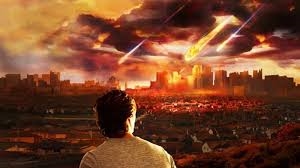
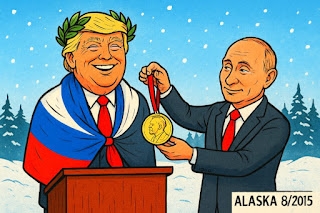



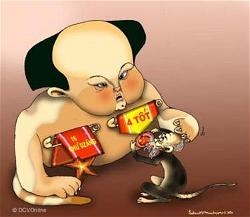





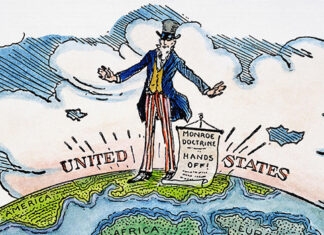

.639036537080968570.jpg)
